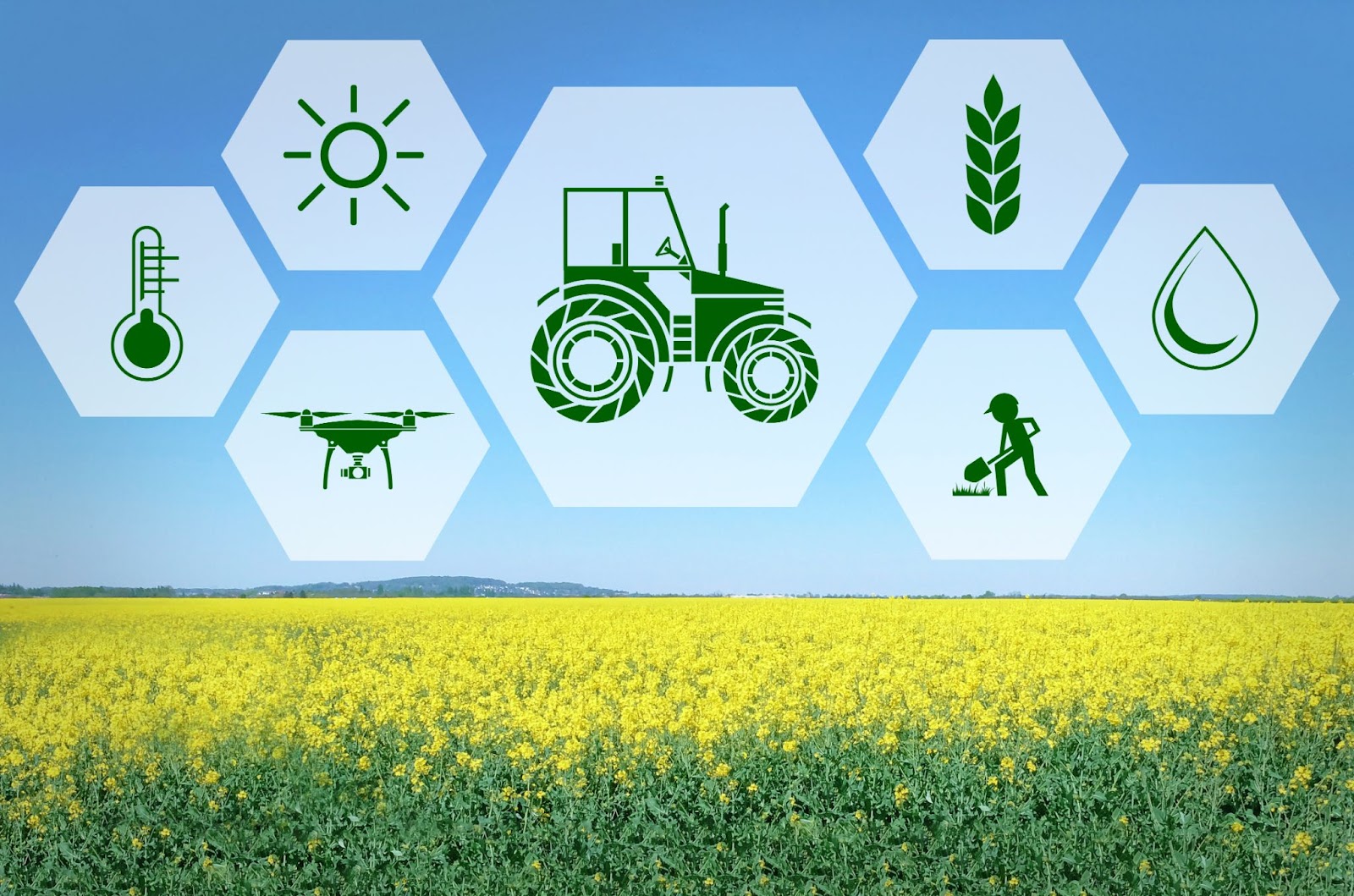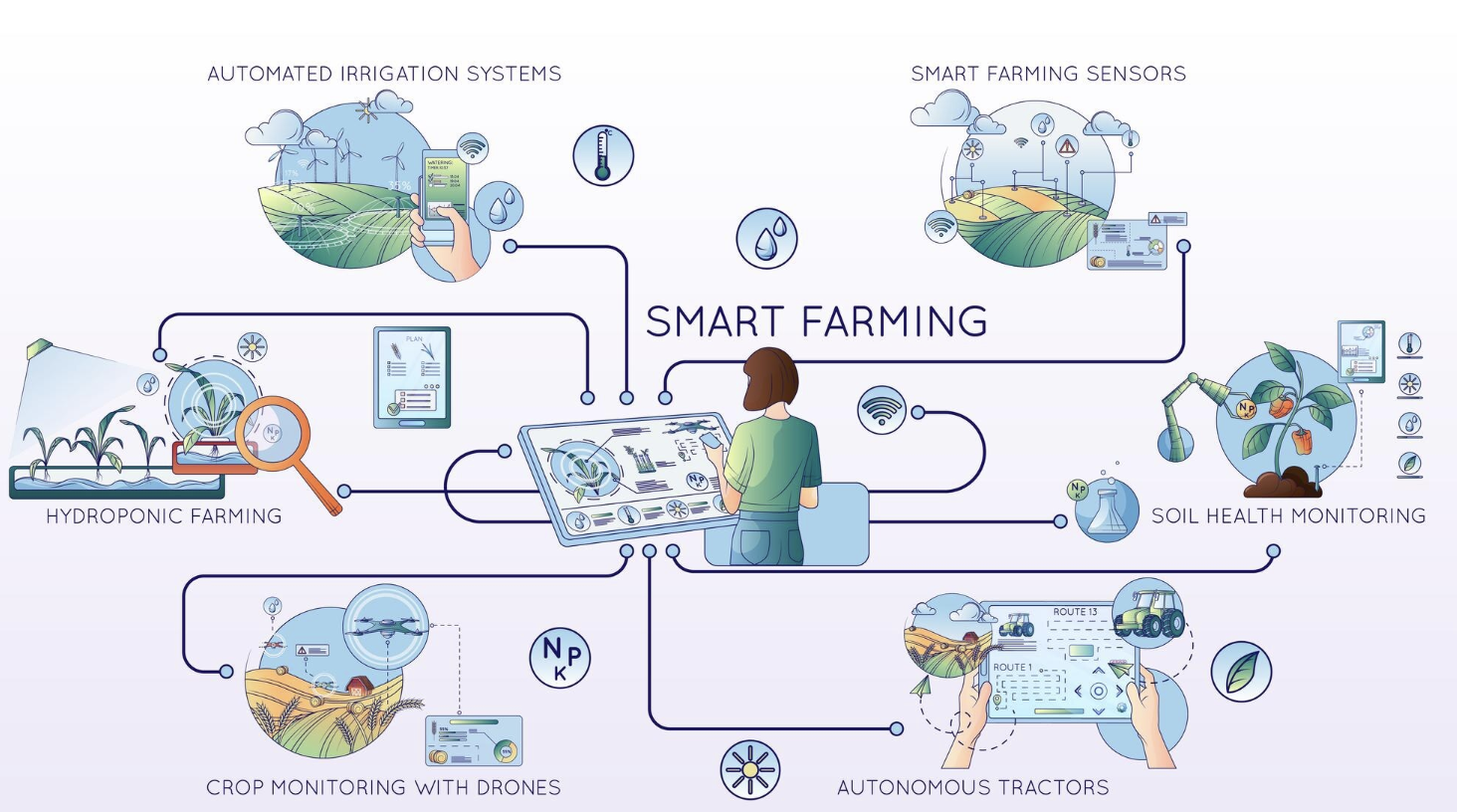Agriculture has been the foundation of human society for thousands of years, providing food, livelihoods, and stability. Yet, with today’s challenges—growing populations, climate shifts, and finite resources—farmers face increasing pressure to maximize production. According to the Food and Agriculture Organization (FAO), meeting food demand by 2050 will require increasing crop yields by 60% to 70%, a steep goal given the constraints farmers face.
Precision agriculture offers a way forward. By integrating advanced technologies into farming practices, it enables farmers to maximize their resources while managing crops with greater precision and insight. Computer vision (CV) in precision agriculture benefits crop health monitoring. Through high-resolution images and data analysis, computer vision helps farmers spot issues early to protect and boost crop yields.
In this article, we’ll explore how computer vision enables crop health monitoring in agriculture, offering farmers new ways to keep crops healthy and productive.
Key Applications of Computer Vision for Sustainable Farming
Computer vision in agriculture enables non-contact and scalable sensing solutions for sustainable farming. Some of its most promising applications include crop health monitoring, disease detection in crops, resource allocation optimization, and robotic harvesting. Let's discuss these below:
- Crop monitoring: Computer vision enables farmers to monitor crop health with precision. Through high-resolution images, it can identify early signs of disease, detect pest infestations, and analyze nutrient deficiencies. This early detection allows for quick interventions, reducing crop loss and minimizing the need for heavy pesticide use.
- Resource allocation optimization: Efficient use of resources like water, fertilizer, and pesticides is crucial for sustainable farming. Computer vision helps optimize these inputs by analyzing crop conditions in real time. Farmers can reduce waste, lower costs, and lessen environmental impact by applying resources only where and when needed.
- Robotic harvesting: CV systems in robotics help forecast the best harvest times for crops like wheat, corn, and soybeans. These systems can accurately determine harvest times by analyzing plant growth, weather, and soil moisture. This minimizes waste by collecting only mature produce, enhancing efficiency and reducing labor costs, especially for large-scale farms.
- Crop counting and yield estimation: Computer vision aids in automatic crop counting for accurate yield forecasting. CV systems can estimate crop size and quality and predict when they’ll be ready to harvest. This helps farmers better anticipate yields, make informed decisions about resource allocation, and improve their market predictions.
- Livestock monitoring: CV systems can monitor livestock such as cattle, sheep, and pigs. These systems provide real-time observations, enabling early detection of diseases and production issues. Farmers can assess animal behaviors and conditions with vision artificial intelligence (AI) to improve animal welfare and management through data-driven insights.
How Computer Vision Monitors and Enhances Crop Health

Computer vision provides real-time insight and data analysis to help farmers manage crop health. Here are some ways it monitors and enhances crop health.
Identifying Stress Factors
Computer vision systems use high-resolution images from drones or stationary cameras. They then process these images using machine learning algorithms to detect symptoms of stress, such as discoloration or wilting.
For instance, algorithms like support vector machines and convolutional neural networks can analyze the color spectrum of leaves. This helps to identify nutrient deficiencies or diseases in plants. The strategy will also help farmers to respond quickly to issues like pest infestations or fungal infections.
Tracking Plant Growth Stages
CV technology employs image processing and ML algorithms to analyze plant images captured at regular intervals during growth. It uses techniques like image segmentation to isolate the plant from the background and feature extraction to identify key characteristics, such as leaf area and color. It also uses phenological stage detection to recognize specific growth stages.
This tracking enables farmers to spot irregularities, such as stunted growth or abnormal leaf shapes, which may indicate underlying problems.
Using Diverse Imaging Techniques
Thermal and multispectral imaging can help detect plant stress or disease before it becomes visible. Thermal cameras can measure the temperature variations to indicate the water stress. On the other hand, multispectral cameras capture light reflectance at different wavelengths to assess plant health.
CV systems analyze this data to identify areas experiencing drought stress or nutrient deficiencies to ensure timely interventions.
Distinguishing Crops from Weeds
CV technology uses traditional image processing and deep learning for weed detection. Combined with ML methods, such as SVM and random forest, CV systems analyze plants' shape, color, and texture in images to classify vegetation accurately. This capability allows for targeted herbicide application, reducing chemical use and minimizing the impact on beneficial plants.
Due to advances in computing power and increased data volume, deep learning algorithms, particularly CNNs, can extract multiscale and multidimensional spatial features of weeds. This can help overcome the limitations of traditional extraction methods.
Technologies Used in Crop Health Assessment
Computer vision employs various technologies and equipment to monitor crop health. Here’s a list of a few of them.
- CV-enabled drones: CV-enabled drones use remote sensing technology for crop health monitoring. They capture the images of agricultural areas in good resolution to monitor crop health. These images can help to identify water stress or nutrient deficiencies.
- Field robots and autonomous vehicles: These machines move around fields and use computer vision to gather important data about crop health and soil quality. This data can then help to perform tasks like targeted spraying and harvesting.
- Multispectral and hyperspectral imaging: These are images taken in different wavelengths of light. This helps farmers to see details about plants that are not visible to the naked eye. By looking at the light reflected from crops, these methods can identify issues like nutrient shortages or diseases.
Case Study: How CV Enabled Pest Detection in Olive Groves
Modern agriculture faces significant challenges, particularly in managing pests that threaten crop health. One notable example is the olive fly (Bactrocera oleae Rossi), a persistent infestation in Mediterranean olive groves.
Researchers used lightweight YOLO-based models, YOLOv7-tiny and YOLOv8n, to identify olive flies in sticky yellow and McPhail trap photos collected across Portugal and Greece.
The YOLOv7-tiny model achieved impressive results, with 88.3% precision and 90% mAP.50, while the YOLOv8n model showed 85% precision and 90% mAP.50. Despite these differences, both models demonstrated their potential to streamline pest monitoring processes.
The YOLOv8n model was deployed on a Ubuntu Server 23.04 Raspberry Pi 3 microcomputer to implement this technology as an experimental prototype in the field. This showcases a practical application of computer vision in enhancing crop health by automating pest detection.
Future Innovations in Precision Agriculture

As technology advances, precision agriculture also evolves in exciting ways. Innovations like IoT and robotics make farming more data-driven and efficient. Let’s look at some of the transformations in precision agriculture.
Enhanced Connectivity with IoT and 5G Networks
Combining IoT devices and 5G connectivity transforms smart farming. Advanced ground sensors can detect soil and environmental changes, while 5G ensures fast, reliable data transfer between these devices.
This connectivity allows farmers to collect and analyze diverse data—such as soil temperature and satellite images—faster and more accurately.
Variable Rate Technology (VRT) to Boost Productivity
Variable rate technology (VRT) lets farmers apply resources like water and nutrients precisely where needed. It reduces manual tasks and human error by adapting application rates across different areas to enhance productivity and precision.
Tools like precision sprayers and pest management systems make resource application more efficient, leading to healthier crops and less waste.
Genetic Engineering for Resilient Crops
Plant species resistant to pests and diseases can be created through genetic engineering. To increase agricultural yields and promote food security, researchers integrate genetic insights with crop imaging data. This way, farmers can grow more resilient crops and prepare for upcoming agricultural problems.
Increased Use of Remote Sensing and Big Data
Remote sensing uses drones and satellites to give real-time data on crop health and soil moisture. This helps farmers respond quickly to issues as they come up. Combined with data from sources like GPS and soil sensors, this information helps farmers make better decisions. It leads to higher crop yields and less waste.
Robotics and AI to Automate Labor-Intensive Tasks
Robotics and AI are taking over labor-intensive tasks and providing helpful insights. Autonomous tractors and robotic harvesters work nonstop to boost efficiency and lower labor costs. AI also analyzes data from these machines to spot problems like crop diseases. It can even predict yields, helping farmers improve every part of their operations.
Challenges in Implementing Computer Vision in Agriculture
While computer vision offers huge possibilities for enhancing agricultural practices, implementing it isn’t without challenges. AgTech companies face various technical and financial difficulties when applying advanced tools to traditional farming environments.
- High initial investment: Adopting computer vision technology requires substantial hardware and specialized software investment. Hardware may include drone cameras and sensors. These upfront costs can be a barrier for many farms.
- Data management demands: Computer vision generates vast amounts of image and video data, which requires robust systems for storage and processing. Farms need advanced computing infrastructure to analyze this data efficiently, adding to operational complexity and cost.
- Environmental and technical limitations: The accuracy of computer vision data can vary significantly with factors such as lighting, weather, and camera quality. For instance, poor lighting or foggy conditions can hinder clear image capture and impact the reliability of insights.
- Integration with traditional equipment: Incorporating AI and machine learning models into existing farming machinery and practices can be challenging. This integration requires technical expertise and often involves modifications to conventional equipment, making the transition more difficult for farmers.
Accelerate Your Computer Vision Initiatives With Picsellia
Addressing the challenges of managing vast visual data, seasonal workloads, and adapting to diverse agricultural conditions can be complex, but Picsellia simplifies it.
Picsellia provides a comprehensive MLOps stack to streamline these processes, from data management to model deployment and monitoring. With advanced tools for handling terabytes of data, scaling during peak seasons, and adapting to diverse agricultural settings, Picsellia ensures your computer vision projects stay efficient and accurate.
Discover how Picsellia can transform your approach—book a demo today.







.png)
